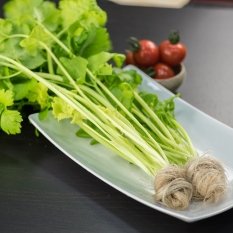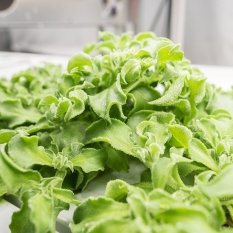FRESH PRODUCE CATALOG
Below are all the varieties our science team have tested and grown successfully in our AEtrium line of aeroponic systems
Leaf Celery
Also known as Chinese celery, this particular cultivar has skinnier stalks than traditional celery, but have a stronger flavor and aroma. Both the leaves and the stems are used in Eastern dishes, like stir-fry.
CherRY TOMATO
The ancestor to most modern tomatoes (Solanum lycopersicum), they are believed to have originated from South or Central America. Cherry tomatoes are perfect for salads, stews, or just for snacking.
CHIVES
A popular winter herb and widely used in European cuisines, chives can be found in multiple dishes featuring cheeses, added to pancakes, or sprinkled on a simple plate of scrambled eggs. Also planted for their ornamental flowers, chives are an important producer of nectar for many insect species.































